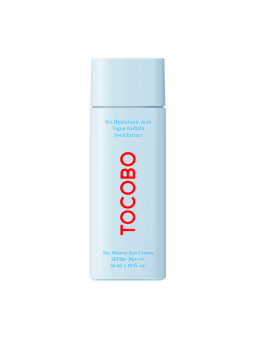Top Sunscreen Myths You Can Forget Right Now!
It's no secret that sunscreen is the best anti-aging strategy and essential for year-round skin care. Even during the gloomy winter months, sunscreen can be your best friend. Sun damage isn't always visible, and proper sun protection can help protect you from future wrinkles and sunspots.
Here are the most dangerous myths about sunscreen and the truth behind it:
Myth #1: All sunscreens are greasy and leave a sticky film on your face.
First, it's not true. Many Korean sunscreens boast maximum protection and minimum visibility. They absorb well, creating a protective layer against the sun, unlike Western sunscreens which are thick and difficult to apply. Most sunscreens in K-beauty are more like milk essence or BB cream, making them gentler on the skin and easier to absorb.
Myth #2: The sun isn't bad when it's cloudy.
FALSE! SPF should always be the last step of your morning routine, no matter the outside temperature or the weather. UVA and UVB rays penetrate cloud cover, so even on a cloudy day you need to protect your skin.
Myth #3: You can't mix sunscreen or SPF on your skin because they will stain you and not be as effective.
We don't usually use enough sunscreen, so if you need to use different brands or types of sunscreen, why not! Every sunscreen is great, you can apply different brands and SPF. Just make sure they have a factor of 30+.
Myth #4: If you wear SPF 40 with SPF 15, it affects the sunscreen's protection.
Not really. You definitely won't get SPF 55 since sunscreen doesn't work that way. It is important to remember that if you are using different SPFs, let them fully absorb before adding the next one. Sunscreens are tested and assigned an SPF number based on how they are applied to clean skin. So make sure sunscreen is the last thing you put on to make sure it's effective.
Myth #5: Chemical sunscreen needs direct sunlight to activate.
Not true! Chemical sunscreens work without it, but they actually break down over time due to exposure to direct sunlight, requiring reapplication. Also, sunscreen should be used last. Anything you put on it can reduce its effectiveness. If you need to apply makeup over sunscreen, wait a few minutes until the sunscreen is completely absorbed.
Myth #6: Chemical sunscreen is bad for your skin.
Whether you choose natural or chemical sunscreen is up to you! Everyone's skin reacts differently, so it's best to check which one works best for your skin first. Don't be afraid to try new sunscreens from time to time.













































































